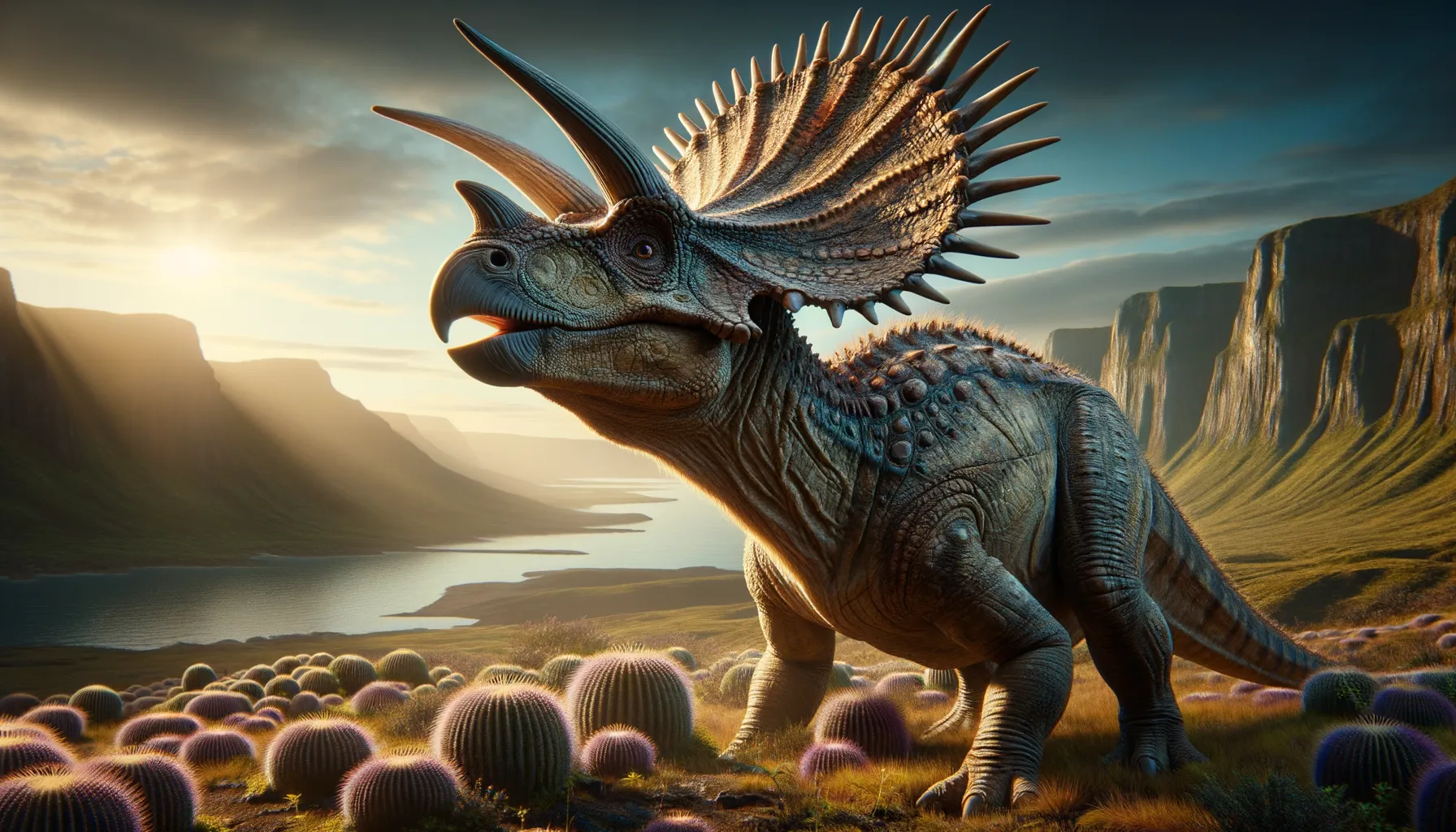
Mercuriceratops
The armored guardian of the Cretaceous.
Period
Cretaceous
Length
About 20 feet long.
Height
Approximately 6 feet tall at the hips.
Weight
Around 2 tons.
Mercuriceratops was a horned dinosaur known for its distinctive frill, which resembled the helmet of Mercury, the Roman messenger god. This medium-sized herbivore roamed the lands of North America during the Late Cretaceous period. Its frill was not just ornamental but also possibly used for defense and attracting mates. Fossil evidence suggests it was part of the larger ceratopsid family, known for their iconic head ornaments and frequently found in diverse habitats.
Diet
Mercuriceratops was a herbivore, feeding primarily on low-lying plants. Its beak-like mouth was perfect for cropping tough vegetation, a feature shared with its ceratopsian relatives.
Hunting
Being a herbivore, Mercuriceratops did not hunt for food. Instead, it used its strong jaws to consume plants. Its social behavior might have provided protection against predators.
Environmental challenges
Mercuriceratops lived during a time of changing climates which could affect food availability. Competition for resources with other herbivores would have been a significant challenge. Predation by large carnivores like Tyrannosaurus also posed a constant threat. The changing landscapes required it to adapt to varying environmental conditions.
Speed
Likely slow due to its robust build.
Lifespan
Approximately 70 to 80 years.
First discovery
Discovered in 2014 in North America.
Fun Facts
- Mercuriceratops was a horned dinosaur that lived around 77 million years ago during the Late Cretaceous period.
- It was named after the Roman messenger god Mercury because the shape of its skull ornamentation reminds scientists of Mercury's winged helmet.
- Mercuriceratops had a unique wing-like frill at the back of its head, which is unlike anything seen in other ceratopsians.
- This dinosaur was approximately 6 meters long, making it a medium-sized ceratopsian.
- The fossils of Mercuriceratops have been discovered in North America, specifically in Alberta, Canada, and Montana, USA.
- Mercuriceratops was a herbivore, likely feeding on the lush vegetation of its time.
- Its distinct frill may have been used for display, species recognition, or even thermoregulation.
Growth and Development
Mercuriceratops juveniles likely grew rapidly, requiring a diet rich in vegetation to support this growth. This rapid growth was crucial for survival, helping youngsters reach a size too large for predators as quickly as possible. The development of its frill and horns would have been gradual, becoming more pronounced with age.
Habitat
Mercuriceratops inhabited lush, forested regions with access to abundant plant life. These environments provided both food and shelter from predators. The dinosaur likely roamed open plains and forested areas near water sources. Seasonal changes in its environment might have affected its migration and feeding patterns.
Interaction with other species
As a herbivore, Mercuriceratops often shared its habitats with other plant-eating dinosaurs. Its formidable horns and frill likely deterred predators, maintaining a peaceful coexistence with non-aggressive species. During the mating season, its interactions with others of its kind would have peaked, engaging in displays of strength and dominance.
Natural lifespan
Mercuriceratops could naturally live up to 80 years.
Reproduction
Mercuriceratops likely engaged in seasonal breeding, with males displaying their impressive frills and horns to attract mates. Nesting involved laying eggs in communal groups, possibly in sandy or soft ground for protection. Parental care might have included guarding the nests from predators until hatching occurred.
Social behaviour
Mercuriceratops was a social creature, often moving in herds for better protection against predators. Its social structure might have included hierarchies, dictated by frill size and strength. Communication within the herd would have been vital for coordinating movements and signaling danger.
Fossil locations
Fossils of Mercuriceratops have been found primarily in the northern regions of North America. The most notable discoveries occurred in Alberta, Canada, and Montana, USA. Its fossils have provided insights into the diversity of ceratopsians during the Late Cretaceous. Ongoing excavations continue to uncover more about its distribution and ecological preferences.
